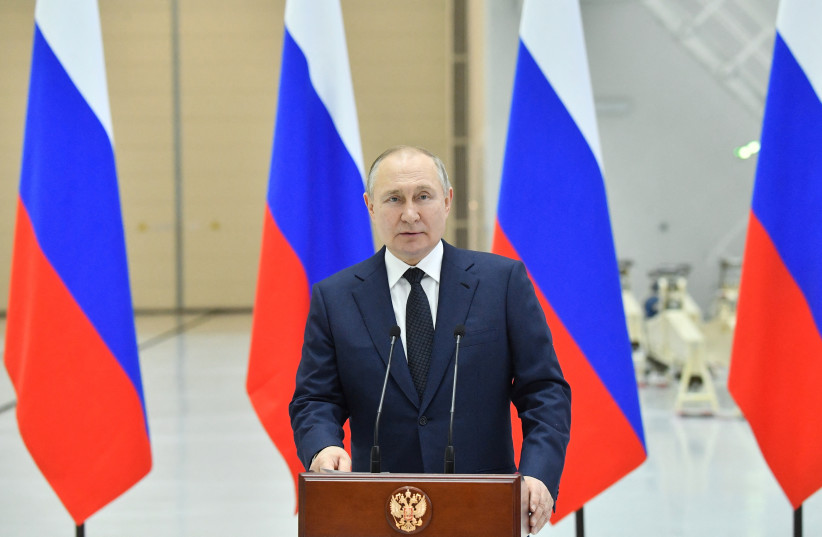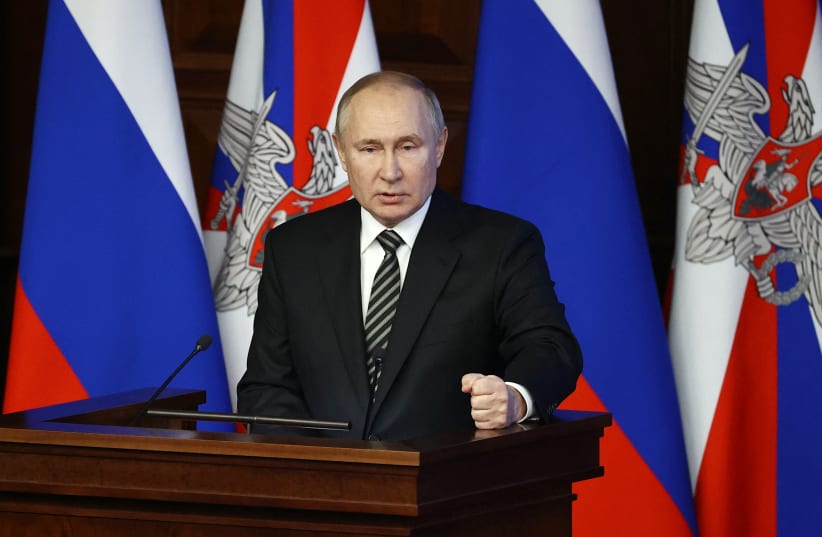How bad will things get if Russia uses tactical nuclear weapons in Ukraine?
Most experts still do not think that Russian President Vladimir Putin will actually use nuclear weapons in Ukraine, but more and more people think he might.
This is happening both because Moscow has carried out an increasing amount of unspeakable war crimes that the West didn’t see coming, because the war drags on, because Putin is looking more desperate as Kyiv rallies and because he is threatening it more explicitly than before.
What it would mean to use a tactical nuclear weapon could also determine what happens next.
Would Putin “just” explode a weapon over the Black Sea to scare everyone, but without killing anyone? Would he use a weapon on a Ukrainian military target that was far enough away from civilian areas to limit the casualty toll? Or would he intentionally drop it on a civilian area to maximize casualties? Can Russia actually deliver a tactical nuclear weapon?

Can Russia actually deliver a tactical nuclear weapon?
First, tactical nuclear weapons are smaller and primarily designed to be used against a limited military force at shorter range. Generally, they are expected to have an explosive power of between one to 100 kilotons. The nuclear bomb dropped by American on Hiroshima was 15 kilotons, but part of its raw destructive impact came from being dropped directly onto a city of civilians.
In contrast, Putin’s strategic nuclear weapons can be fired from much greater distances to reach just about anywhere and can range up to 1,000 kilotons, with the capability of not just killing some people in a city or on a battlefield, but actually vaporizing an entire city.
THERE IS a debate among experts as to whether Russia’s nuclear delivery forces are battle-ready after seeing how unexpectedly incompetent their conventional forces have been in Ukraine.
The significant intelligence about Russia’s nuclear forces from all of the post-USSR years, when Washington and Moscow gave each other extraordinary access, means that some experts have pinpointed Putin’s most likely nuclear move to be from an Object S site – such as Belgorod-22, just 40 km. from the Ukrainian border.
America’s vast network of satellite surveillance, cameras hidden beside the road and spies on the ground would likely be able to track a nuke’s progress in real-time.
Surprisingly, few experts think that the US would intervene to blow up a Russian nuclear device nearing operational status.
Rather, the focus of experts seems to be on the Biden administration potentially revealing to Ukraine – and the world – that Moscow is in the process of mobilizing its nuclear forces.
After all of this – would Russia’s use of a nuclear weapon lead to all-out nuclear Armageddon?
The likelihood is still no.
If the number of Ukrainians killed by Russia’s hands remains low, the US response might be very limited. Some people talk about merely a ratcheting up of diplomatic and economic pressure.
Others suggest a potential cyber attack to take down the command and control network involved in the nuclear deployment or of related Russian conventional forces.
On the other hand, others believe the US would need to at least use some conventional forces to attack any Russian ship, aircraft or base involved in deploying the nuclear device.
Such a direct response of US military forces against Russian ones would already be reaching the highest point of tension between the world powers in decades.
STILL, OTHERS say that if Putin used a nuclear device, nothing short of America using a similar device against Russia forces – in a similarly limited and parallel way to how Moscow might use one against an isolated, smaller group of Ukrainian forces – would be enough to deter Putin from additional nuclear deployments.
During the Obama administration, two different teams of officials reached opposite conclusions about how far a nuclear exchange started by Russia in Ukraine would go.
And if Russia went all the way and incinerated a Ukrainian city of civilians – chances are the only options on the table for the US would be massive conventional retaliation against a wide number of Russian forces in Ukraine – or using a nuclear device in a more damaging (if still limited) way against Russia.
Curiously, one of the scenarios explored by Obama-era officials was using a nuclear weapon against Belarus to make a clear point to Putin, without hitting large numbers of his countrymen directly.
This is where things could get a lot more dangerous.
If both sides use a nuclear weapon to kill more than a small number of people, some believe that a nuclear elevator and sudden escalation and miscalculation might be the most likely scenario.
At that point, all bets would be off, because once the sides start taking more nuclear actions based on their fears of what the other might do first, and the unbreakable nuclear taboo threshold itself has been crossed, it starts to become more “rationale” to fire first than to “risk” waiting and the possibility of being less effective in hitting back with a second strike.
In other words, if one side hits the other with overwhelming nuclear force (both the US and Russia are estimated to have around 1,400 deployed strategic nuclear weapons each), the side that strikes second may already be mostly decimated and be limited in how hard it can hit back.
This nuclear elevator escalation is exactly why some experts would advocate not responding with a nuclear weapon, even if Russia uses one against Ukraine – as long as it does not use one against NATO.
Cumulatively, this means that, although we are closer to disaster than at any time since the 1962 Cuban missile crisis – and would become even closer if Russia deploys a tactical nuclear weapon against Ukraine – there are still many scenarios for how things could come out short of a worldwide nuclear meltdown.
